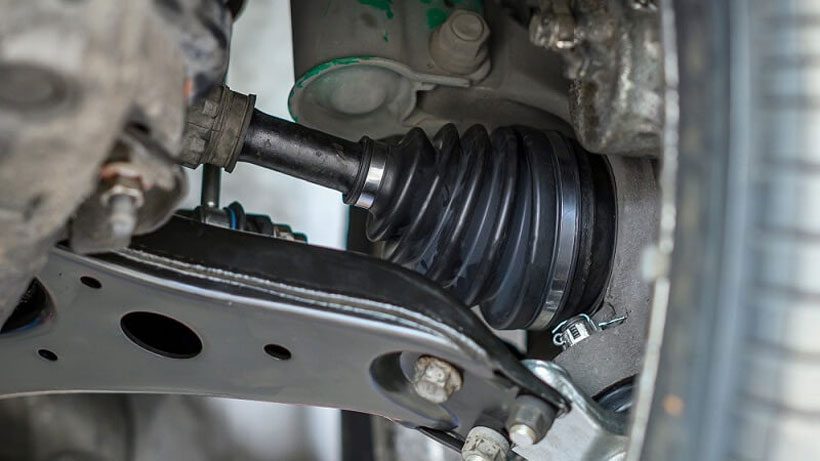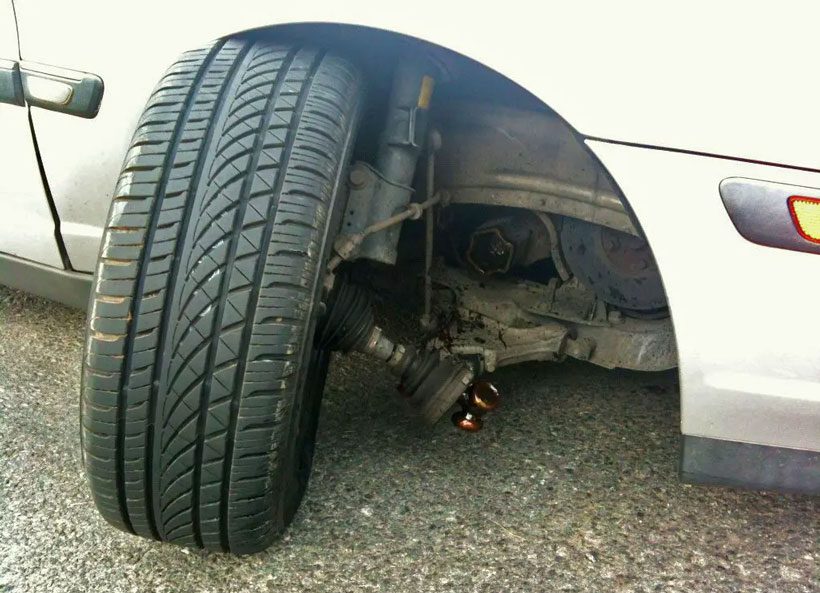Can You Drive A Car With A Broken Axle- Symptoms And Repairs
The axle is what transfers power to the wheels through the transmission or differential. Without it, the wheels can’t rotate. So just as the engine and brakes are all vital components of your vehicle, so is the axle.
But can you drive a car with a broken axle? The answer is yes, but driving on a broken axle is risky. If your axle is broken, it can damage the transmission or result in the wheel detaching from your car. Also, your vehicle might lose control which can cause a severe accident.
Therefore, it is critical to repair your axle once it’s broken. Read on to know the symptoms of a broken axle, including how to repair it.
How Does The Axle Work?
The axle is one of the key and intricate components needed for your car to function optimally. The axle is a stabilizing rod that connects the wheels to your vehicle and helps to bear the weight of your car, passengers, and luggage.

One important function of your car axle is to transfer rotary power from your car engine to the drive wheels. In other words, the engine powers the axle; the axle then transmits power to the wheels.
Can You Drive A Car With A Broken Axle?
Yes, but not for long. The axle and the transmission system are linked together via the differential. So a broken axle could damage the transmission system. For example, the transmission could drop gears, sustain a perforated fluid reservoir, leak oil, or even get cracked bearings.

Furthermore, a broken axle could damage the suspension system or result in unusual deterioration patterns on your tires. The suspension system is what maximizes the tension between the car tires and the driveway to give steering stability and convenience to the passengers.
If your axle is merely worn out, you might still manage to drive it for just a little period. But when it’s broken, it could lead to your car failing, resulting in intense damage or even loss of lives.
Therefore, it is safest to stop your car immediately; push it to the side of the road, and get it towed to an experienced mechanic’s shop.
Watch the video below as it explains what happens when you drive with a broken axle.
Symptoms Of A Broken Axle
If you’re wondering how to tell if you have a broken axle, below are some of the symptoms of it.
- Loud banging noises coming from below the car
- Inability to accelerate
- The car starts to pull in one direction
- Difficulty shifting gears smoothly
- The car loses control
- Tires start to deteriorate
- Steering becomes hard
- Oil leaks on the tire’s inner edge or beneath the vehicle
- Braking failure
- The tire loses alignment
- Power is unable to be transferred from the engine to the wheels
Watch this video to understand how a broken axle sounds.
Causes Of Broken Axle
Here are some of the main causes of a broken axle:
- Excess load on your car
- Driveway conditions like curbs, potholes, and bumps
- Car accidents

How To Repair A Broken Axle?
Two ways will determine how to fix a broken axle: solid axle suspension and independent suspension.
1. Solid Axle Suspension
A solid axle suspension is what protects your car’s differential within the axle, attached to the wheels by tight half-beams. The whole axle shifts as one and if the left wheel plunges into a pothole, the right wheel reacts by going upward. It is a dependent suspension system.
When you want to repair a solid axle suspension, the axles are withdrawn from the axle trenches and reinstated with new ones. This is done by taking out the differential lid, brakes, and anything that clasps the axle to the differential carrier.
Furthermore, it demands wiping the axle trenches and the carrier to ensure that no metal shavings are lurking there.

2. Independent Suspension
This is a suspension system in which the action of one wheel is not directly transferred to the other. In independent suspension, each wheel is allowed to run independently of the other when it plunges into a pothole or hits a bump.
To repair an independent suspension, the axles are simply detached from the axle centers and replaced.
How To Maintain Your Car Axle?

Because the axles are crucial to protecting you on the highway, they should be properly maintained. Here’s how you can maintain your car axle.
- Oil the axle
- Always ensure the mobile components of your axle are free from mud, dust, and trash
- Repack the wheel bearings regularly
- Occasionally consult your car mechanic for servicing
- Replace leaking seals
- Inspect your axle before and after each use
- Examine your tire pressure for signs of unequal tread wear before every journey
FAQs
Here are some interesting FAQs about the car axle;
Yes. A bad axle could cause engine damage. This is because the engine and the axle are connected. So when your axle is bad or broken, it could easily damage your engine.
If your axle is broken, you may start to hear vibrations, banging, and clicking sounds while driving. This happens mostly when you’re accelerating or swerving. Also, sometimes if the axle is broken, your vehicle would be hard to move.
A bad axle makes a clicking sound or rattling noises because of it’s loose joints.
Last Words
Axles are an essential component of your car. The rigidity and stability of an axle are discovered to be one of the most critical elements for a vehicle to gain and retain peak performance. When your axle is strong, it can steadily transfer the potent force from the engine to the driveway.
This will give you enough control regardless of the driving conditions. A broken axle will make steering difficult. Also, it is risky, so driving with a broken axle is not advised. If you can’t fix your axle by yourself, consult a specialist for inspection and repair.

